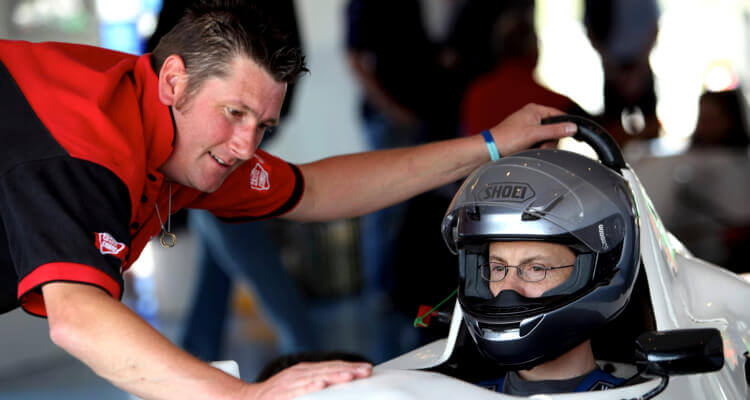
How to become a racing driver
Love F1? Ever fancied being a racing driver yourself? Here’s our look at how Formula One stars get on track to becoming a professional racing car driver.
Driving racing cars – it’s all in the genes
Looking at successful Formula One drivers in recent times, you could be forgiven for thinking that the best way to become a potential future champion is to be born the son of a top racing driver.
Back in 1996 Damon Hill became world champion and, of course, his father was previous world champion Graham Hill. The following year, Canadian racer Gilles Villeneuve’s son Jacques likewise became world champion and now we are seeing this phenomenon repeated a generation later.
Among the 2022 Formula One starting grid we saw Carlos Sainz junior, son of the World Rally champion, plus former F1 driver Jos Verstappen’s son Max won the season championship.
So maybe the secret of success at the highest level in motor racing does indeed lie in the DNA? There can surely be no better example of this than the Schumacher family, led by seven times world champion Michael, his brother Ralph and now son Mick.
Making it as a top racing driver with a big wallet
Fortunately for those of us without racing driver genes in our families, there are plenty of examples of other people who have made it to the top levels in the motor racing world. However, one of the main factors is money.
Everyone knows that motor racing is an expensive sport. Not only are the cars themselves packed with technology, but there’s also the need for mechanics and specialist technicians to support and manage aspiring racing drivers. That all requires commitment and deep pockets.
Take Lance Stroll, for example, whose father just happens to be a multi-millionaire. Lance took up karting at the age of ten and two years later in 2010 was spotted by the Ferrari Driver Academy. He then progressed through the ranks of the junior formulas, all of which represents a fairly typical path to becoming a racing driver.
His big break in Formula One came in 2017 when he joined the Williams team – supposedly after his father paid them $80 million! Currently he is a driver for the Aston Martin racing team, which just happens to be owned by a consortium of business people including… his father, Lawrence Stroll.
Making it as a top racing driver from the bottom up
If you are not the offspring of a multi-millionaire either, do not despair, as some drivers still make the big time on the back of natural driving talent.
Probably the most famous case of this was the Formula One legend James Hunt, whose party lifestyle was the antithesis of what you would expect from a racing driver serious about making it to the top level of their sport.
However, credit for his 1976 world championship win must also be due in some part to the sponsorship and support that he had enjoyed as he worked his way through the motor racing formulas, with the support of his wealthy patron Lord Alexander Hesketh.
Oh money again – we seem to be back to this as the major factor for success in Formula One.
Swapping open-wheelers for rally cars
Perhaps now is the time to consider other (marginally) less expensive types. How about rally driving, where encouragingly there has been a long history of women also competing successfully at top level?
Pat Moss is the first name that springs to mind, as a top woman driver who enjoyed much success and media attention in rallies during the 1960s and ‘70s. Although how much influence having racing driver Stirling Moss as your brother, as well as connections to racing teams and sponsors had, we will never know.
In the 1980s, who could forget French rally driver Michele Mouton, who successfully campaigned in the legendary original Audi Quattro over many years? And among the crop of current female race and rally drivers I would suggest keeping a watchful eye on Catie Munnings whose career is going from strength to strength.
The fact that only two women have so far ever started in Formula One races seems not due to a lack of suitable skill or talent, rather because they lack money as sponsors appear reluctant to back women racers as a long-term commitment.
Committing to becoming a race driver
Commitment is, of course, a further quality that any budding successful racing driver and their families must also possess. Essential is the willingness to put long hours and hard work into areas such as fitness, diet and building mental resilience. The ability to bounce back from incidents, accidents and acceptance of the fact that each race only ever produces one winner.
Surely the greatest example of determination to succeed from humble origins is the story of seven times Formula One World Champion Lewis Hamilton? His father Anthony worked multiple jobs to buy second hand karts for his son to learn to race and develop winning ways.
Not to mention countless hours spent preparing and maintaining karts and driving thousands of miles for Lewis to take part in races from the age of eight.
Racing from a young age
This all brings us neatly to the final ingredient that most successful racing drivers seem to possess – youth. With champions becoming ever younger, I’m sorry to say that if you are reading this blog with an alcoholic drink in your hand, you’ve almost certainly already missed your chance to be a professional racing driver, irrespective of whether you have driving genes or lots of money in your family.
Fortunately, whether you are still young, or just young at heart and dream of driving a race car – without spending a fortune – then Into The Blue has a Single Seater Racing Car Experience to suit you!



